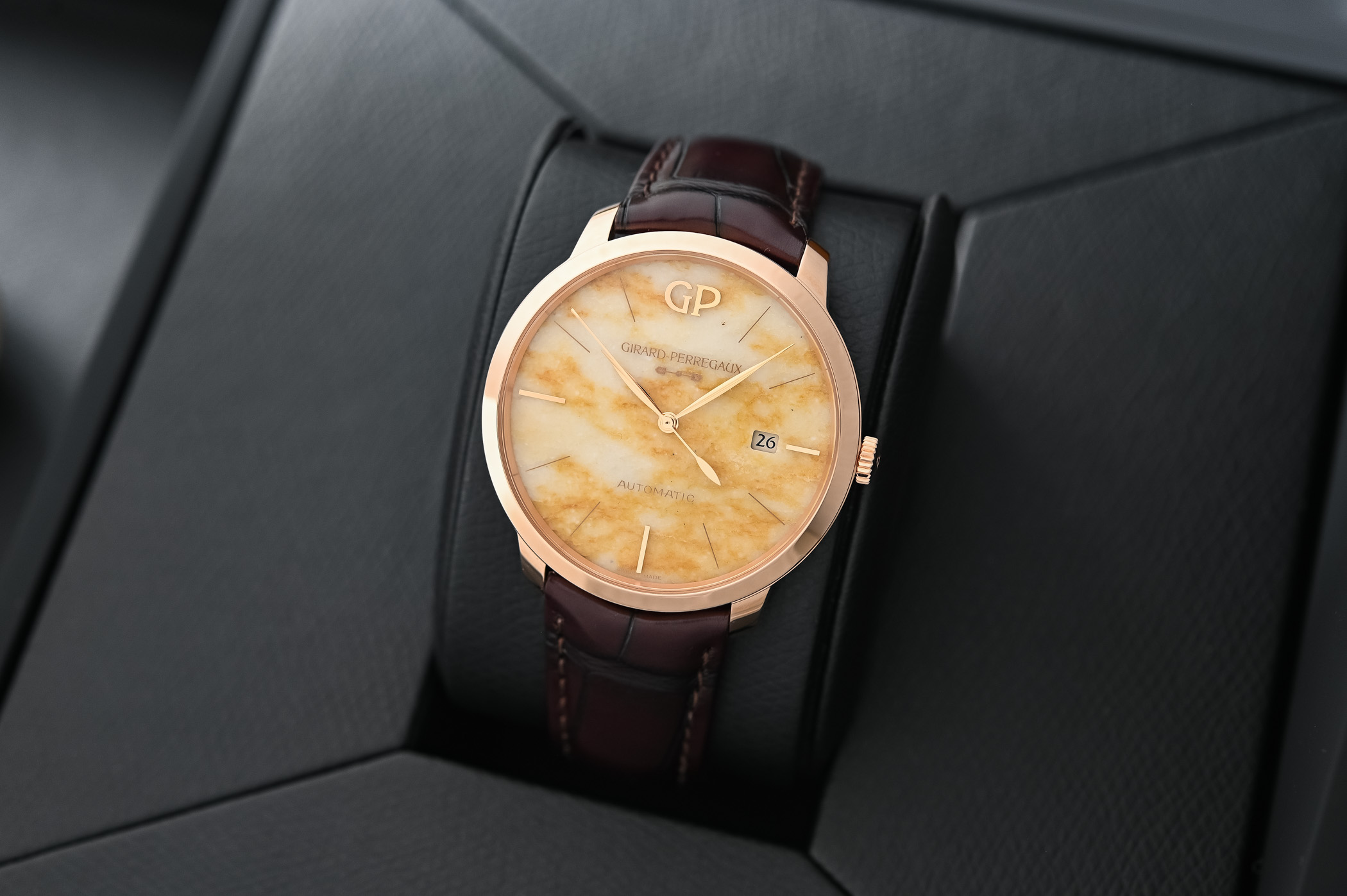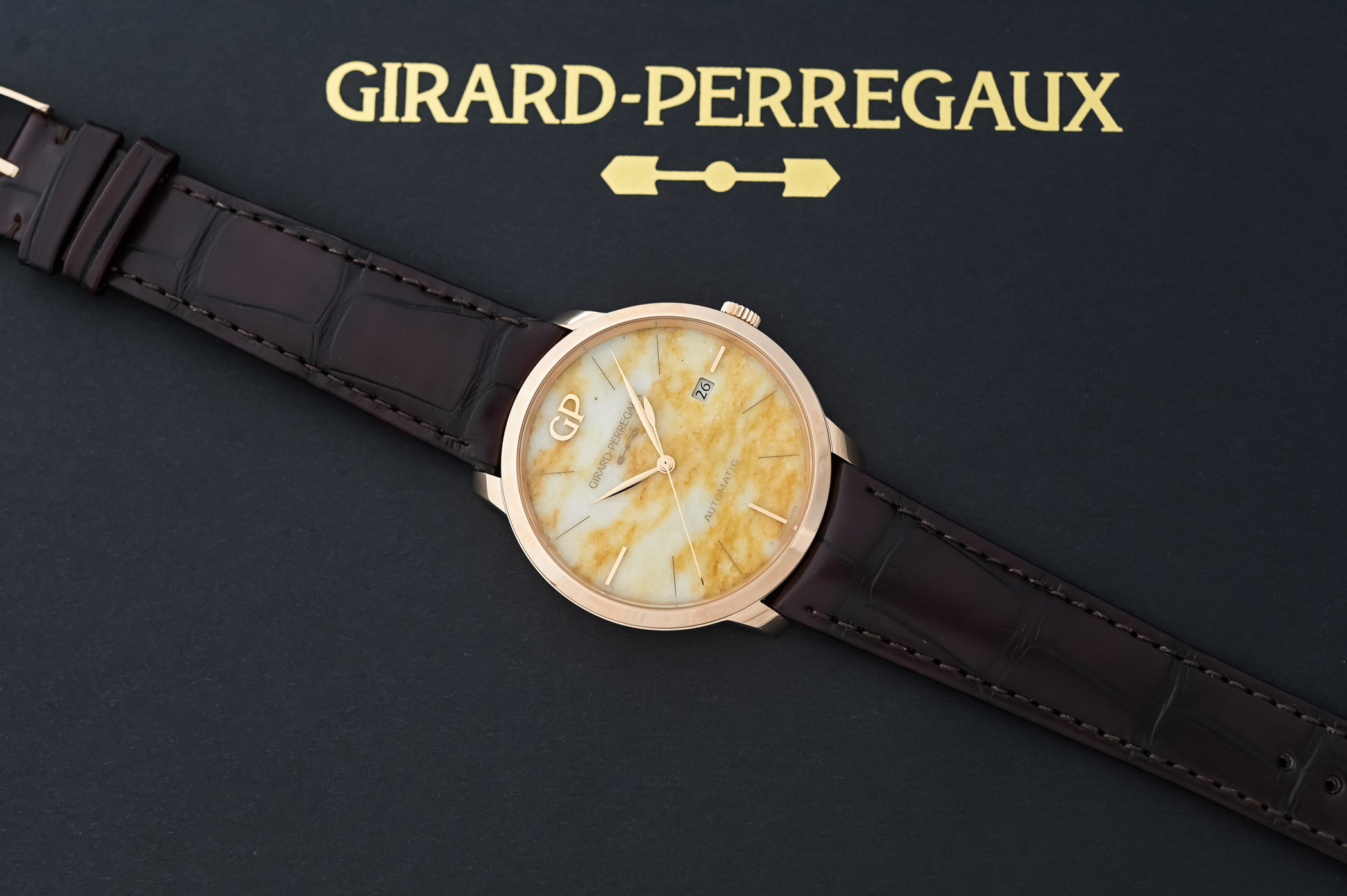The Grand Cru Girard-Perregaux 1966 Château Latour Edition
Raise a glass to the 1966 Château Latour Edition with a dial crafted from pebbles from the mythical Latour vineyard.

Collaboration watches are a dime a dozen these days as watch brands turn to high-profile players and marques on the sports and cultural scene to add some pizzazz to their collections. Even some of the oldest Swiss watch brands are not immune to the appeal of collaborations, especially if the partner is as reputable as Château Latour, the mythical Bordeaux vineyard. As Maisons that are defined by their ancestral savoir-faire and place of origin, the outcome of this union is the Girard-Perregaux 1966 Château Latour, an exclusive edition of 18 pieces that will appeal to watch and wine collectors alike.
Château Latour was founded in 1331 and is ranked among the top five’ Premier Grand Cru Classé’ from the Médoc region in France. Most of the vines are planted on hilltops overlooking the Gironde Estuary, where the grapes are nurtured by the clay subsoil protected by a thick blanket of pebbles. Only the grapes from the 47 hectares surrounding the Château can be used to produce Grand Vin. Owned by François Pinault since 1993, you might remember that his powerful luxury consortium – Kering Group – also owned Girard-Perregaux from 2011-2022.
Established in 1791 and a key player in La Chaux-de-Fonds since 1847, Girard-Perregaux enjoys a rich watchmaking heritage, including its pioneering and award-winning period in the field of chronometry in the late 19th century and the famous La Esmeralda Tourbillon with three gold bridges. Awarded another prize for its first high-frequency Gyromatic movement in 1966, this event was celebrated by the launch of the 1966 collection, characterised by slim, elegant dress watches. The family chosen to house this collection is the 1966, and the special edition comes in a 40mm polished pink gold case with a height of 9.40mm, attached to the wrist with a brown alligator strap and matching pink gold pin buckle.
We’ve all heard of watches with stone dials (including GP’s handsome black onyx version of the 1966) and pebble-shaped cases, but this might be one of the few watches with a pebble dial. And not any old pebbles, mind you, but pale-yellow pebbles taken from the Latour vineyard. To create the dial, an artisan must patiently cut and whittle each pebble down to a thickness of 0.45mm. The disc is then mounted on a brass base; combined, they have a thickness of just 0.70mm. Obviously, no two pebbles are the same, and the sandy yellow and white patterns of each dial are unique. Complemented by golden appliques in the form of thin baton indices at 3, 6, and 9 o’clock, an applied GP logo at noon and elegant leaf-shaped hands, the dial has a small date aperture carved into the pebble at 3 o’clock.
The movement powering the 1966 Château Latour Edition is the trustworthy in-house automatic calibre GP03300, which is revealed beneath the sapphire crystal on the caseback. With a frequency of 28,800vph / 4Hz, the 218-part movement offers a power reserve of 46 hours. The plates and bridges are bevelled, engraved, circular-grained and decorated with Côtes de Genève. The large oscillating weight in 18k yellow gold is also finished with Côtes de Genève.
Availability & Price
The Girard-Perregaux 1966 Château Latour Edition is a limited edition of 18 numbered pieces. It will be available exclusively to private guests of the Château Latour estate and Villa Girard-Perregaux, the ancestral home of GP in La Chaux-de-Fonds. The price is CHF 36,000.
For more information, please consult girard-perregaux.com.










3 responses
I don´t understand why GP uses black numbers for date. They are sore to my eyes. I`d love gold ones, in harmony with dial.
I don’t understanwhy this has a date in the first place, especially halfway the hub and the rim of the dial..
Kinda look like diarrhea stain, to be frank.